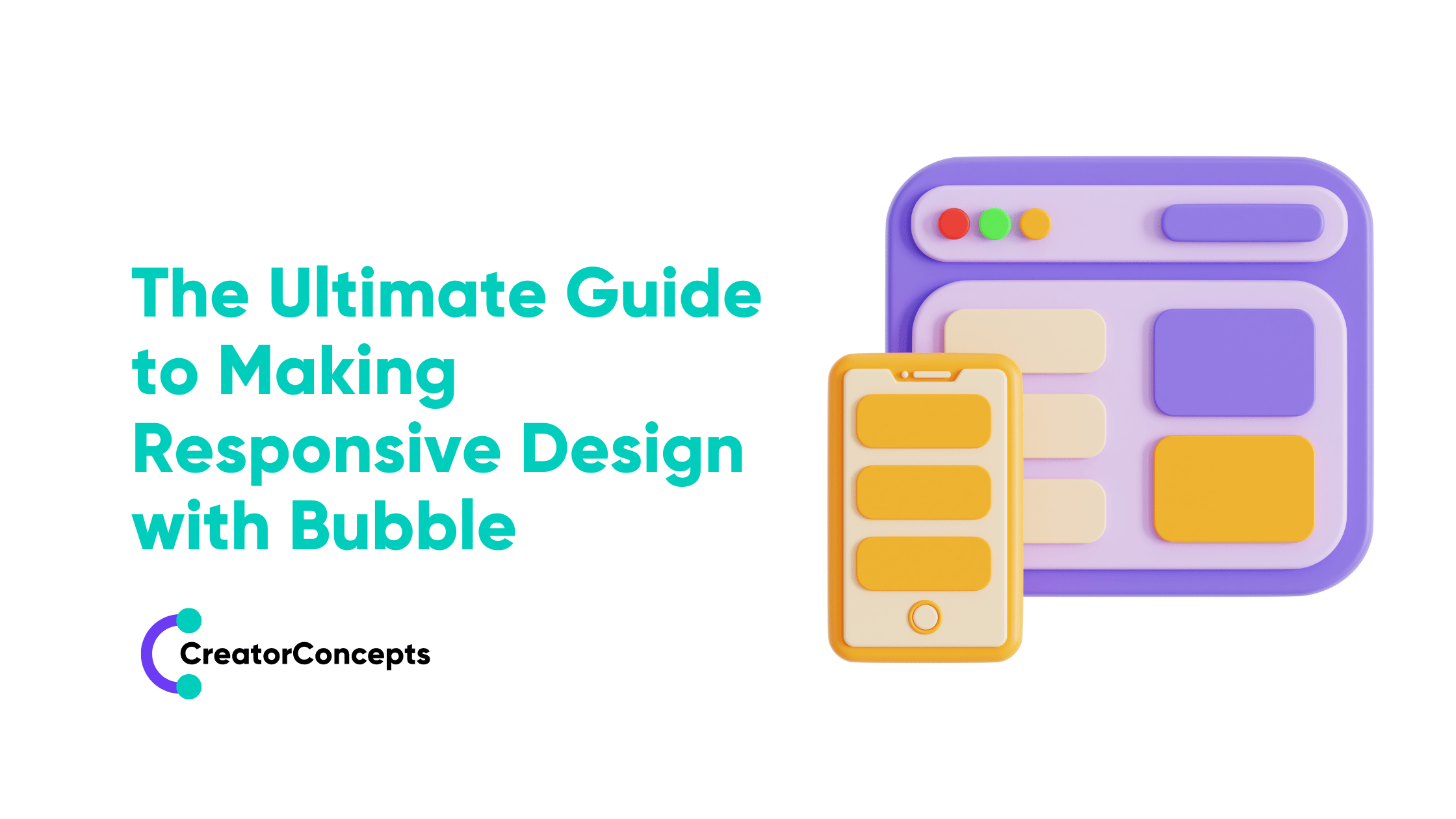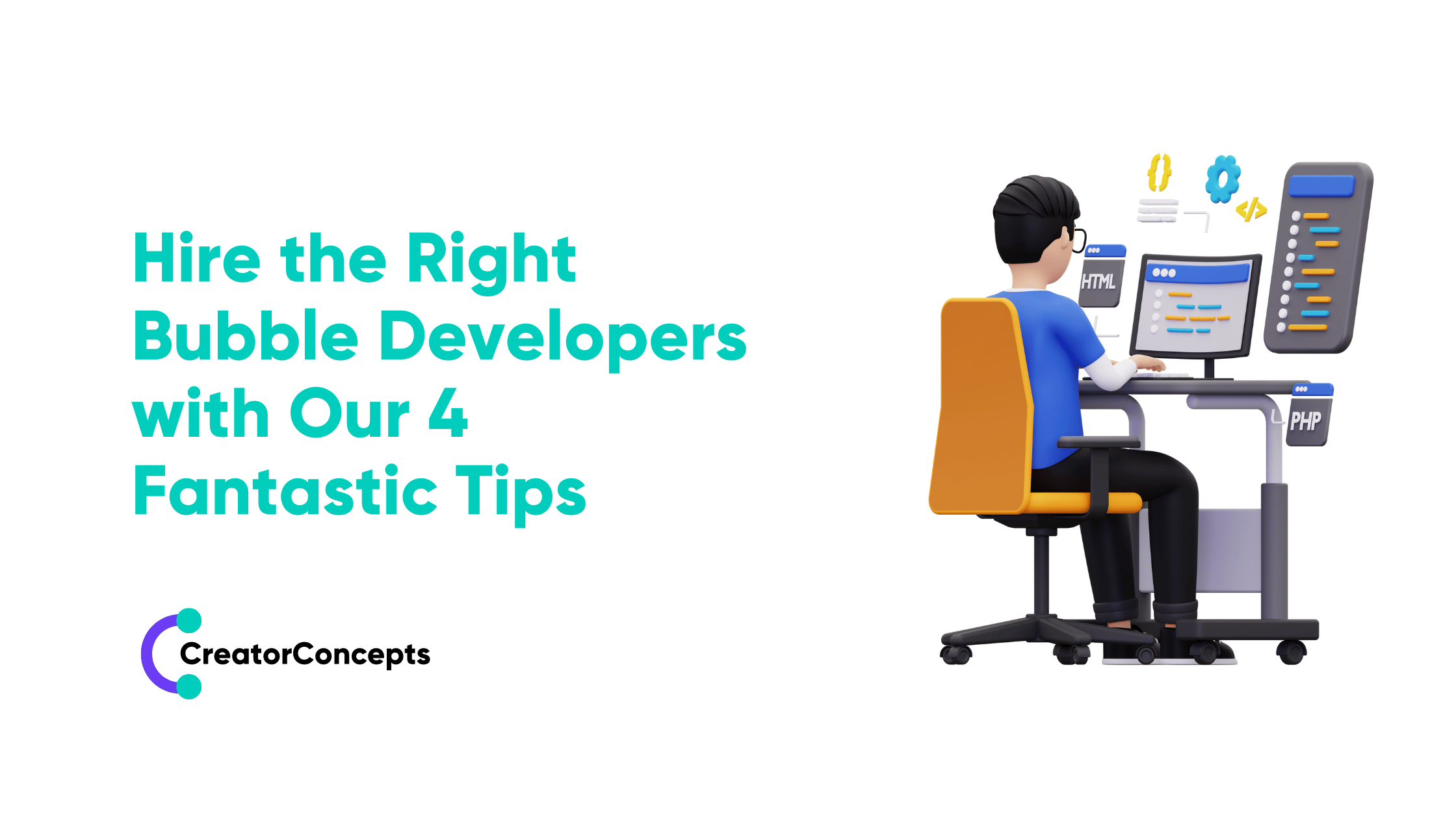Top Tips for Successful Prototype Development
Creating a successful prototype is a vital part of bringing any digital product to life. At CreatorConcepts Limited, we understand how important it is to get this phase right. A good prototype not only helps you visualise your idea but also allows you to test and refine it before investing heavily in development.
Using no-code tools makes this process easier and faster. No-code platforms like Bubble enable you to build functional prototypes without extensive technical skills. This approach allows you to focus on your idea, making changes and improvements quickly based on feedback.
This article will provide you with top tips for successful prototype development. Whether you're working on a community management platform, a member engagement app, or a social network, these tips will help you create a prototype that effectively meets your goals and user needs. By following these guidelines, you can ensure that your prototype is well-planned, thoroughly tested, and ready for the next stage of development.
Define Your Goals and Audience
Before starting your prototype, it's important to know what you want to achieve and who your target users are. Begin by defining the main goals of your app. What problem is it solving? What are the key features? Having a clear vision will guide you through the development process.
Once you've defined your goals, identify your target audience. Who will use your app? Understanding your user base helps you design a product that meets their needs. Create user personas that represent your ideal users. These personas should include details like age, occupation, and tech skills. Knowing these details will help you tailor the user experience to suit their needs.
Next, research your competition. See what similar apps are doing and identify their strengths and weaknesses. This research helps you differentiate your app and focus on unique features. With clear goals and a well-defined audience, you're now ready to start building your prototype.
Use No-Code Tools for Quick Development
No-code tools like Bubble are excellent for creating prototypes quickly and efficiently. These platforms allow you to build and test your ideas without needing to write code. This is perfect for startups looking to save time and costs.
Start by choosing a no-code tool that fits your needs. Bubble is a great option because it's user-friendly and offers a range of features. Once selected, begin by sketching out a simple layout of your app. This includes the main screens, buttons, and menus. Use the drag-and-drop feature to place these elements, making it easy to visualise your design.
Next, add basic functionalities. These can include user logins, forms, and navigation menus. The goal here is to create a working model that can be tested and improved upon. Don't worry about making it perfect; focus on getting a functional version up and running.
With your no-code prototype, you can quickly move from an idea to a testable product. This speeds up the development process and allows for rapid iterations based on user feedback. Whether you are building a community management platform or a social network, no-code tools make prototype development straightforward and efficient.
Gather Feedback and Iterate
Collecting feedback is vital for developing a successful prototype. Start by sharing your prototype with a small group of users. These could be friends, family, or individuals from your target audience. Ask them to use the app and note their experiences. Their feedback can reveal issues you might have missed and suggest improvements.
Organise the feedback into key areas for improvement. Focus on usability, functionality, and user experience. Some common questions to ask users include:
- Is the app easy to navigate?
- Are the features working as expected?
- What did you like or dislike about the app?
Use this feedback to make necessary changes. Improve any confusing parts of the app and fix any bugs. Make small, manageable changes rather than trying to overhaul everything at once. This ensures that each version of your prototype is better than the last.
Continuing to gather feedback and iterate on your design helps you refine your product. Each round of feedback brings you closer to a final version that meets user needs and expectations.
Test Thoroughly and Prepare for Launch
Once you have incorporated feedback and refined your prototype, it's time for thorough testing. Test every feature of your app to ensure everything works as expected. This includes checking for bugs, verifying accuracy, and testing the user experience. Ask a few people who haven't seen the app before to test it and provide fresh feedback.
Create a checklist of items to test. This helps you stay organised and ensures nothing is overlooked. Key areas to test include:
- User Interface: Is it intuitive and easy to use?
- Functionality: Are all features working properly?
- Performance: Does the app load quickly and run smoothly?
- Compatibility: Does the app work on different devices and platforms?
Once you are satisfied with your testing, you can prepare for the launch. Plan your launch carefully to ensure a smooth rollout. Create marketing materials, such as app store listings, screenshots, and promotional content, to attract users. If possible, consider a soft launch to catch any last-minute issues before the full release.
Conclusion
Developing a successful prototype involves careful planning, using the right tools, gathering feedback, and thorough testing. These steps help ensure that your app meets the needs of your users and functions smoothly. By defining your goals and audience, using no-code tools, and continuously iterating on feedback, you can create a strong foundation for your app.
At CreatorConcepts Limited, we specialise in no-code prototype development, helping you bring your vision to life efficiently. If you are ready to turn your idea into a successful app, contact CreatorConcepts Limited today. Let's work together to make your concept a reality!
 By
By


